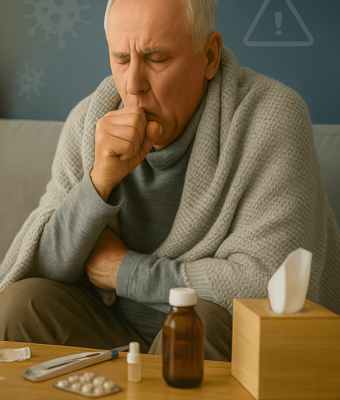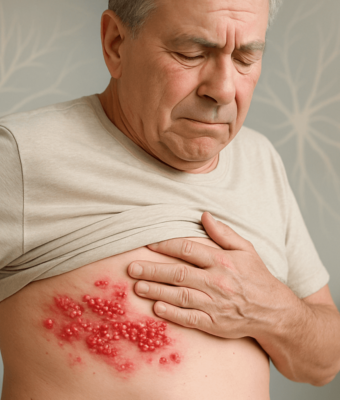As the crisp autumn air transitions into the biting cold of winter, many individuals grapple with the phenomenon known as the “winter blues.” While it’s normal to experience a slight dip in mood during the colder months, this shift can be more profound and debilitating for some. Seasonal Affective Disorder (SAD) is a form of depression that follows a seasonal pattern, with symptoms typically emerging in the fall and winter months. This review aims to provide doctors with a comprehensive understanding of SAD, including its causes, symptoms, diagnosis, and treatment options.
What is Seasonal Affective Disorder?
Seasonal Affective Disorder, aptly abbreviated as SAD, is a subtype of major depressive disorder characterized by recurrent depressive episodes that coincide with specific seasons, most commonly fall and winter. Research indicates that SAD affects about 1-2% of the general population, with a higher prevalence in northern latitudes where daylight duration significantly decreases during winter. Notably, SAD is more prevalent in women than in men, and its onset often occurs in early adulthood.
Typically, SAD symptoms emerge in late fall or early winter, dissipating as spring and summer take hold—a phenomenon known as winter-pattern SAD or winter depression. Conversely, a minority experiences depressive symptoms during the spring and summer months, termed summer-pattern SAD or summer depression, which is less commonly encountered.
Symptomatology
The symptoms of SAD closely resemble those of major depressive disorder and can range from mild to severe. The indications encompass those commonly linked to depression, along with disorder-specific manifestations that vary between seasonal patterns.
It’s important to note that not every individual with SAD will experience all the symptoms outlined below.

General symptoms of depression may include:
- Persistent feelings of sadness, anxiety, or emptiness throughout most of the day, nearly every day, for at least two weeks.
- Feelings of hopelessness or pessimism.
- Irritability, frustration, or restlessness.
- Guilt, worthlessness, or helplessness.
- Loss of interest or pleasure in previously enjoyed activities.
- Decreased energy, fatigue, or a sense of slowed-down movement.
- Difficulty concentrating, remembering, or making decisions.
- Changes in sleep or appetite, or unplanned weight fluctuations.
- Physical discomfort such as aches, pains, headaches, cramps, or digestive issues without a clear physical cause persisting despite treatment.
- Thoughts of death or suicide, or actual suicide attempts.
Seasonal Patterns
One of the hallmark features of SAD is its seasonal recurrence. Symptoms typically begin in the fall, peak during the winter months, and subside in the spring and summer. Healthcare professionals must inquire about the temporal nature of depressive symptoms during patient assessments, as seasonality can provide valuable diagnostic insights.

For winter-pattern SAD, additional symptoms may include:
- Oversleeping (hypersomnia).
- Overeating, particularly with a craving for carbohydrates, leads to weight gain.
- Social withdrawal is akin to a desire to “hibernate.”

For summer-pattern SAD, additional symptoms may include:
- Difficulty sleeping (insomnia).
- Reduced appetite, resulting in weight loss.
- Restlessness and agitation.
- Anxiety.
- Display of violent or aggressive behavior.
It’s crucial to distinguish winter-pattern SAD from the “holiday blues,” which are feelings of sadness or anxiety triggered by stresses during specific times of the year. The depression associated with SAD is connected to changes in daylight hours, not the calendar. Therefore, stressors related to holidays or anticipated seasonal changes in work or school schedules and family visits are distinct from SAD.
Differential Diagnosis
Given the overlap in symptoms between SAD and other mood disorders, clinicians must conduct a thorough differential diagnosis to rule out conditions such as major depressive disorder, bipolar disorder, and different seasonal variations in mood. Careful consideration of the temporal pattern of symptom onset and remission and the exclusion of non-seasonal mood disturbances is crucial for an accurate diagnosis.

Standardized assessment tools, such as the Seasonal Pattern Assessment Questionnaire (SPAQ) or the Hamilton Rating Scale for Depression (HAM-D), can aid in the diagnostic process.
For a SAD diagnosis, the patient must meet the following conditions:
- Exhibit symptoms of depression or the particular symptoms associated with winter- or summer-pattern SAD, as mentioned earlier.
- Experience depressive episodes during specific seasons (winter or summer) for a minimum of two consecutive years. However, it’s important to note that not all individuals with SAD manifest symptoms annually.
- Have depressive episodes during the specific season that are more frequent than those experienced at other times of the year.
Causes and Mechanisms

The root cause of SAD is still elusive, with various factors believed to contribute to its development. One leading theory attribute the disorder to disruptions in circadian rhythms, the body’s internal clock regulating sleep-wake cycles and physiological processes. Reduced exposure to natural light during winter’s shorter days is thought to disturb circadian rhythms, impacting mood-regulating neurotransmitters like serotonin and melatonin.

Studies suggest that individuals with SAD, particularly the winter-pattern variant, exhibit lower serotonin levels, a neurotransmitter regulating mood. Sunlight, influencing molecules that maintain normal serotonin levels, may not function optimally in winter, contributing to decreased serotonin levels. Vitamin D deficiency may worsen this situation in winter-pattern SAD, as vitamin D supports serotonin activity, and reduced sunlight exposure leads to lower vitamin D levels.
Other research proposes that both forms of SAD are linked to altered melatonin levels, a hormone crucial for the sleep-wake cycle. Winter-pattern SAD individuals may produce excess melatonin, causing increased sleepiness. In contrast, summer-pattern SAD individuals may have reduced melatonin levels, aligning with the negative impact of prolonged, hot days on sleep and depressive symptoms. The theories about daylight hours, nights, and temperatures causing sleep disruptions await systematic testing.
Both serotonin and melatonin maintain the body’s daily rhythm in sync with the seasonal night-day cycle. Individuals with SAD experience disruptions in serotonin and melatonin levels, preventing adaptation to seasonal changes in day length and resulting in alterations in sleep, mood, and behavior.
Common among individuals with SAD are negative thoughts and feelings about the limitations and stresses associated with winter or summer. It’s unclear whether these thoughts are causative factors or consequences of the mood disorder, but they can be a valuable focus for treatment.
Treatment Approaches
Treatment options are available for patients with Seasonal Affective Disorder (SAD), falling into four primary categories that can be employed either independently or in combination:
- Light therapy
- Psychotherapy
- Antidepressant medication
- Vitamin D
Light therapy and vitamin D specifically target winter-pattern SAD, while psychotherapy and antidepressants are utilized for general depression treatment, covering both winter- and summer-pattern SAD. Notably, there are no treatments specifically tailored for summer-pattern SAD.
Light Therapy

- Introduction: Since the 1980s, light therapy has been crucial in treating winter-pattern Seasonal Affective Disorder (SAD).
- Objective: Compensate for reduced natural sunlight during darker months.
- Light Box Usage: Individuals engage in light therapy by sitting in front of a highly luminous light box (10,000 lux).
- Duration: Approximately 30–45 minutes daily.
- Timing: Typically conducted in the morning.
- Period: From fall to spring.
- Brightness and UV Light Mitigation: The light box is notably brighter than standard indoor lighting.
- Purpose: Effectively screens out potentially harmful UV light.
- Safety Considerations: Ensures the safety of treatment for the majority.
- Exception: Individuals with specific eye conditions or those on medications with heightened sunlight sensitivity.
- Alternative Measures: Individuals with exceptions may need alternative treatments or supervision during light therapy.
Psychotherapy

- Introduction: Known as talk therapy or counseling, it benefits individuals with Seasonal Affective Disorder (SAD). Teaches new cognitive and behavioral patterns and addresses habits contributing to depression.
- Cognitive Behavioral Therapy (CBT): Specific type of psychotherapy. Aims to assist individuals in challenging and modifying unhelpful thoughts and behaviors. Enhances experience of depressive and anxious feelings.
- CBT-SAD (Customized for Seasonal Affective Disorder): Adaptation of CBT for SAD involves two group sessions per week for six weeks. Focuses on replacing negative seasonal thoughts.
- Addresses thoughts about the darkness of winter or the heat of summer.
- Behavioral Activation in CBT-SAD: It is a process in CBT-SAD. Aids in identifying and scheduling enjoyable indoor or outdoor activities. Counters the typical loss of interest experienced during winter or summer.
- Comparison of CBT-SAD and Light Therapy: Researchers compared Cognitive Behavioral Therapy for Seasonal Affective Disorder (CBT-SAD) with light therapy. Both treatments showed equal effectiveness in improving SAD symptoms. Some symptoms improved slightly faster with light therapy than with CBT.
- Long-Term Study: A long-term study followed Seasonal Affective Disorder (SAD) patients for two winters. The positive effects of cognitive behavioral therapy (CBT) appeared to last longer than other treatments.
Antidepressant Medication

- Introduction: Antidepressant medications are effective for Seasonal Affective Disorder (SAD). It can be used alone or with talk therapy. The mechanism involves altering brain chemicals related to mood and stress.
- Duration: Typically, it takes 4 to 8 weeks to show effects. Improves sleep, appetite, and concentration precede mood enhancements. It is crucial to allow sufficient time for the medication to take effect. Multiple trials may be needed to find the most effective medicines.
- Selective serotonin reuptake inhibitors (SSRIs): Linked to disruptions in serotonin activity. (SSRIs) are prescribed for SAD symptoms and can significantly elevate mood.
- FDA Approval for Bupropion: Extended-release form of antidepressant bupropion approved by FDA. Designed for longer duration in the body. Daily use from fall through early spring prevents the recurrence of seasonal depressive episodes for many individuals.
Preventive Measures
- Lifestyle Interventions: Encouraging patients to adopt healthy lifestyle habits can play a crucial role in preventing or mitigating the symptoms of SAD. Regular exercise, a balanced diet, and adequate exposure to natural light, especially during the brighter morning hours, can positively impact mood and overall well-being.

- Vitamin D Supplementation: Many patients with winter-pattern Seasonal Affective Disorder (SAD) experience vitamin D deficiency. Vitamin D supplements may alleviate symptoms. Studies examining vitamin D as a treatment for SAD yield varied outcomes. Some suggest its efficacy comparable to light therapy, while others report no discernible effect.
Cautionary Note: Consider potential interactions between vitamin D and medications. Seek guidance from a healthcare professional regarding using vitamin D supplements in the context of your medication regimen.
Conclusion
Seasonal Affective Disorder is a complex and often underdiagnosed condition that can significantly impact the lives of those affected. As healthcare providers, a thorough understanding of SAD’s causes, symptoms, diagnostic tools, and treatment options is essential for delivering effective care. By recognizing the seasonal patterns of mood disturbances and employing a multidimensional approach encompassing light therapy, psychotherapy, and lifestyle interventions, doctors can make a significant difference in patients’ lives grappling with the winter blues. As research in this field continues to evolve, clinicians must stay abreast of emerging evidence to refine and optimize their approach to managing Seasonal Affective Disorder.
Reference
Seasonal Affective Disorder. [Internet]. National Institute of Mental Health. [cited 2023 Dec,11]. Available from: https://www.nimh.nih.gov/health/publications/seasonal-affective-disorder






